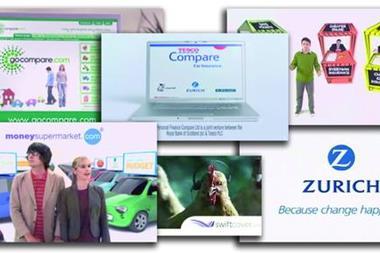Sometimes it feels like clients just don’t know what’s good for them. Lauren MacGillivray looks at a model that suggests offering a default option to encourage positive decisions
It’s likely that you’ve come across clients who stubbornly reject certain products, even though they are important for them. Here’s some advice on giving them a bit of a push.
According to research published by the Chartered Insurance Institute (CII), human psychology can interfere with a client’s ability to choose the best insurance products. So a client with a family may not consider getting critical illness cover because they don’t want to think a serious illness will ever happen to them. But they might think differently if told the cold hard statistic that one in four people will be hit with a critical illness such as cancer or heart disease before retirement.
A think piece called Risky Business: Nudging You to Make the Right Choices – published by the CII in partnership with RSA and think-tank Reform – discusses “nudge theory”. This involves providing a default choice for individuals, which means that they have to do less to make “better” decisions.
The principles of nudge theory are not new, but the 2008 book by Richard Thaler and Cass Sunstein, titled Nudge: Improving Decisions about Health, Wealth, and Happiness solidified the concept.
“Nudge theory offers an approach that helps people make positive choices,” CII director of policy and public affairs David Thomson says. “The financial sector has long relied on the principles of nudge theory to tackle inertia, and is using them more and more.”
Nudge theory is gaining in popularity in financial services and in government. And, increasingly, the two sides are joining forces.
Take pensions. Statistics show that almost half of all employees do not join their employer’s pension plan. So the UK government is considering automatic enrollment from 2012. This would mean new employees being automatically enrolled into a pension scheme and having to opt out if they don’t want to take part.
Another example is the government’s Child Trust Fund programme. Children born on or after 1 September 2002 receive a £250 voucher to start their account. Parents can choose the type of account used but if they don’t make a choice, the government put the unused funds into an equity fund, which will usually outperform a savings account over a period of more than 10 years.
“The government and insurance industry have a common interest to design things in a way that supports people’s behaviour where they might make bad choices,” Thomson says. “[Nudge theory] is a third way between state intervention and letting the market rip.”
The CII’s piece does note some problems with the theory. “A more nudged world, with the government leading its citizens more and more towards particular, uniform behaviours, begins to look like a more technocratic, managerial state.”
The research also says that the benefits can outweigh the risks in certain areas, however, and insurance is one such area.
“Insurance companies are in a position to understand the nature of risk. They can also manage it for their customers. So it is not the case that the state always has to be the choice architect; the concept can be adopted by private actors.”
Thaler and Sunstein offer ways to avoid going too far with a nudge. They should be open and transparent, and they should pass the “publicity principle”. That is, that you are happy to see them out in the open.
The key for brokers and insurers, then, will be to identify the areas in which nudge theory could actually work, and could benefit all parties.
Thomson says: “Anybody who deals with customers directly understands that often people don’t make decisions because it’s easier than making a decision. So it’s a matter of looking at the sort of products where, the more of the population that’s covered, the better the outcome will be for the public good.” IT
How to give your clients a push
1 First and foremost, remember the value of advice. You're there to persuade people to do what you believe is the right thing for them.
2 Identify which products have low take-up and consider why this might be.
3 Consider whether there are any mechanisms or incentives that would help push your clients in the right direction.
4 Understand your client's attitude to risk. For example, when it comes to home insurance, people tend to focus on the risk of fire. But there may be other risks that are more likely to occur.
5 Explain a product rationally. Provide concrete statistics or other data if possible.




































No comments yet